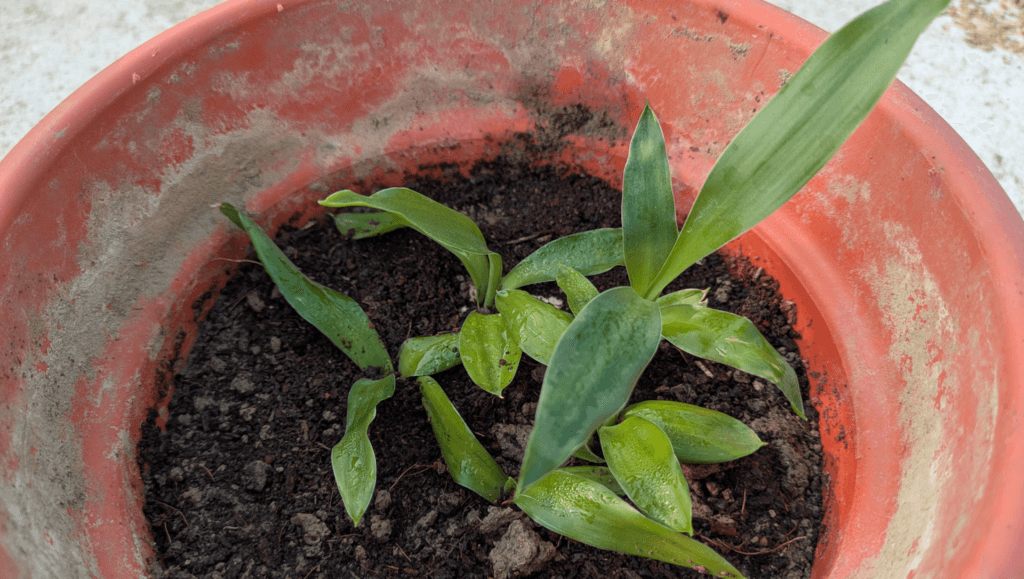Lucky bamboo (Dracaena sanderiana) is a beautiful, low-maintenance plant that is popular in homes and offices. It is believed to bring good luck and positive energy according to Feng Shui. Lucky bamboo can be grown in water or soil and thrives with minimal care. However, proper care is still important to keep the plant healthy and green. This guide will explain everything about lucky bamboo care, from how to grow it, watering needs, light requirements, common problems, and solutions. Whether you are a beginner or an experienced plant lover, you will find all the information you need here!
What is Lucky Bamboo?
Lucky bamboo is not actually a bamboo plant, but a type of Dracaena, a tropical plant native to Africa and Asia. It is loved for its twisted or straight stalks and fresh green leaves. Lucky bamboo can grow in soil or water, making it a flexible plant that adapts well to different conditions. Many people keep it in homes and offices because it is said to bring good fortune, health, and prosperity.
How to Grow Lucky Bamboo

Choosing a Healthy Lucky Bamboo Plant
When selecting a lucky bamboo plant, check for these signs: a. Bright green leaves (No yellow or brown spots) b. Strong, upright stalks (Not soft or wrinkled) c. No bad smell (Rotten smell means root rot) d. Healthy roots (If visible, they should be white or light orange). If buying a lucky bamboo in water, make sure the water is clear and not murky.
Water vs. Soil: Which is Better?
Lucky bamboo grows well in both water and soil. Here’s how each method works:
Growing Lucky Bamboo in Water: Many people prefer growing lucky bamboo in water because it looks beautiful in glass containers. Here’s what to do?
- Choose a clear vase or container so you can see the roots.
- Fill it with clean, distilled, or filtered water. Avoid tap water because it contains chemicals like chlorine that can harm the plant.
- Add pebbles or small stones to hold the stalks in place.
- Change the water every 5-7 days to keep it fresh and prevent bacteria buildup.
- Keep the plant in indirect sunlight.
Growing Lucky Bamboo in Soil: If you prefer to grow lucky bamboo in soil, follow these steps. Growing in soil allows the plant to get more nutrients, making it stronger and more resistant to diseases.
- Choose a pot with drainage holes.
- Use a well-draining potting mix (coco peat + compost + perlite is best).
- Plant the stalks 2 inches deep in the soil.
- Keep the soil moist but not soggy.
- Place the pot in indirect sunlight.
If Growing in Water, change the water every 5-7 days, use filtered, distilled, or rainwater and the roots should be fully submerged in water.
If Growing in Soil, water when the top 1 inch of soil feels dry. Avoid overwatering—too much water causes root rot and use a spray bottle for gentle watering.
Lucky bamboo thrives in bright, indirect sunlight. Direct sunlight can scorch its leaves, so it’s best to place it near a window with filtered light or under artificial lighting. It’s important to avoid locations with direct sunlight, dark corners, or areas near air-conditioning vents, as these can stress the plant and hinder its growth. Common issues with lucky bamboo include yellowing leaves and brown tips. Yellow leaves can result from too much sunlight, poor water quality, or over-fertilization. To address this, move the plant to a location with indirect light, use filtered or distilled water, and reduce the amount of fertilizer used. Brown leaf tips are often caused by dry air, chlorine in the water, or over-fertilization. To remedy this, increase humidity by misting the leaves, use clean water, and fertilize no more than once a month. Pests, such as mealybugs and spider mites, may appear as white cotton-like spots or tiny webs on the plant. To deal with these pests, wipe the leaves with a damp cloth and treat the plant with neem oil or insecticidal soap to eliminate the infestation. In terms of fertilizing, lucky bamboo doesn’t require much. If you do fertilize, it’s important to use liquid fertilizer diluted to half strength, fertilize only once a month, and avoid over-fertilizing, as too much fertilizer can cause the leaves to yellow.
Pruning & Maintenance
Use sharp scissors to cut above a node, remove yellow or damaged leaves and prune if the plant grows too tall. After cutting, new shoots will grow, making the plant bushier and healthier.
Repotting Lucky Bamboo
When your lucky bamboo outgrows its container, repot it using these steps: Choose a bigger pot or container. If in soil, use fresh potting mix and if in water, use fresh, clean water. Gently separate crowded stalks. Repotting helps it stay healthy and continue growing.
Styling & Decoration Ideas
- Place in aesthetic glass vases with colorful pebbles.
- Arrange multiple stalks for good luck (3, 5, or 8 stalks are best for Feng Shui!).
- Try spiral or braided bamboo for a unique look.
Conclusion
It is a beautiful, easy-to-care-for plant that adds greenery and positive energy to any space. Whether you grow it in water or soil, just follow the simple care steps: Keep it in indirect sunlight, Use clean & distilled water, water regularly but avoid overwatering, trim when needed and protect it from pests.
With proper care, your lucky bamboo will thrive for years, bringing beauty and good luck to your home!







